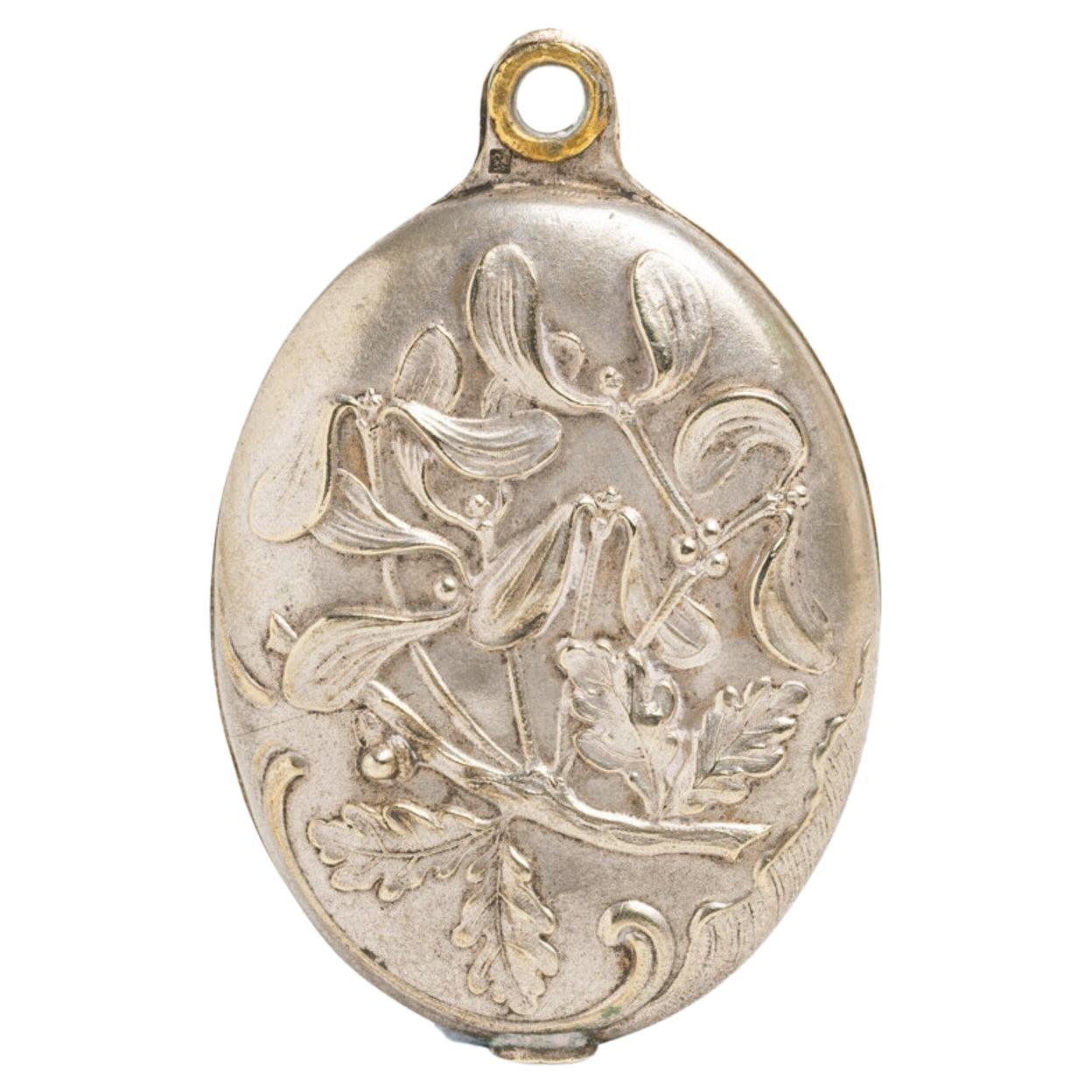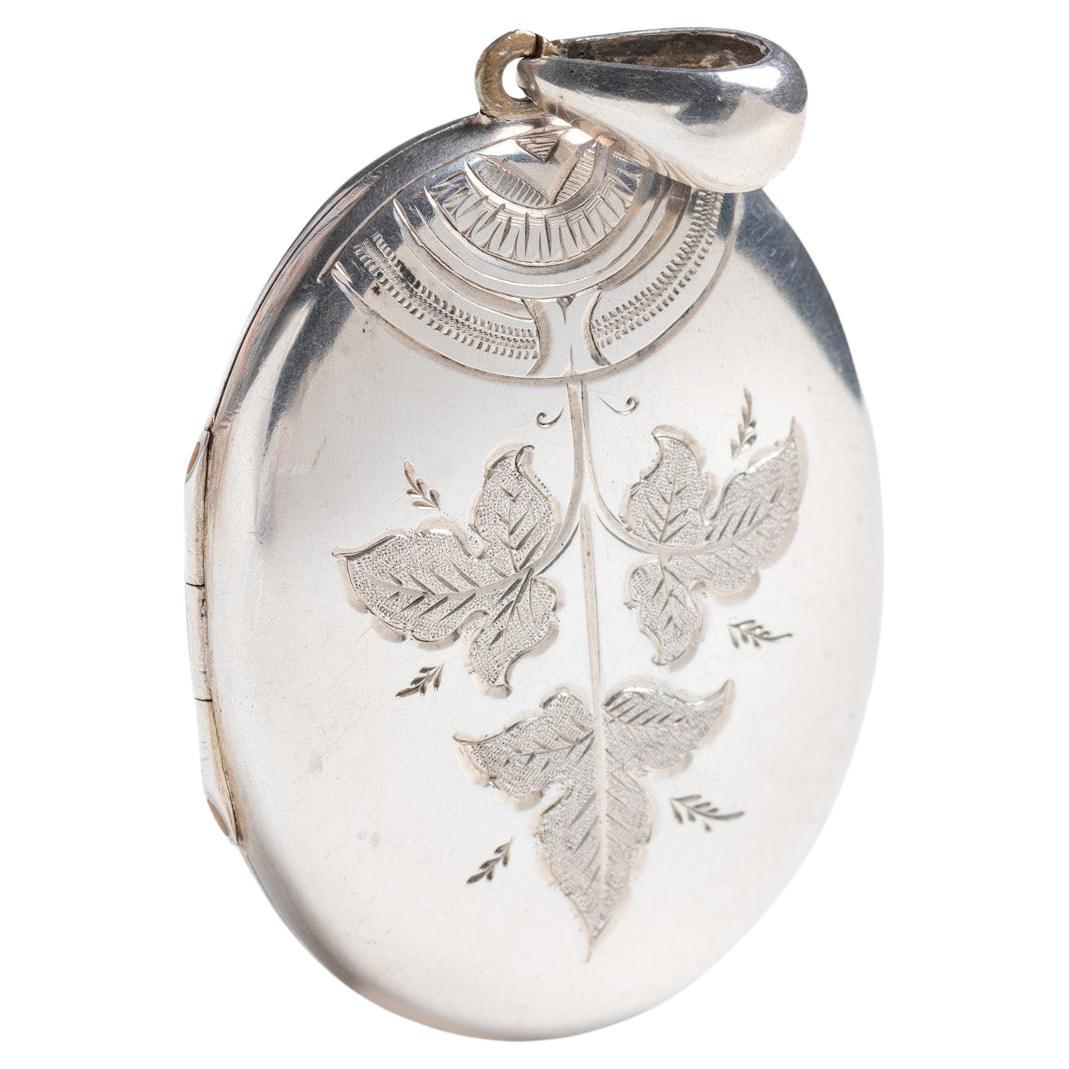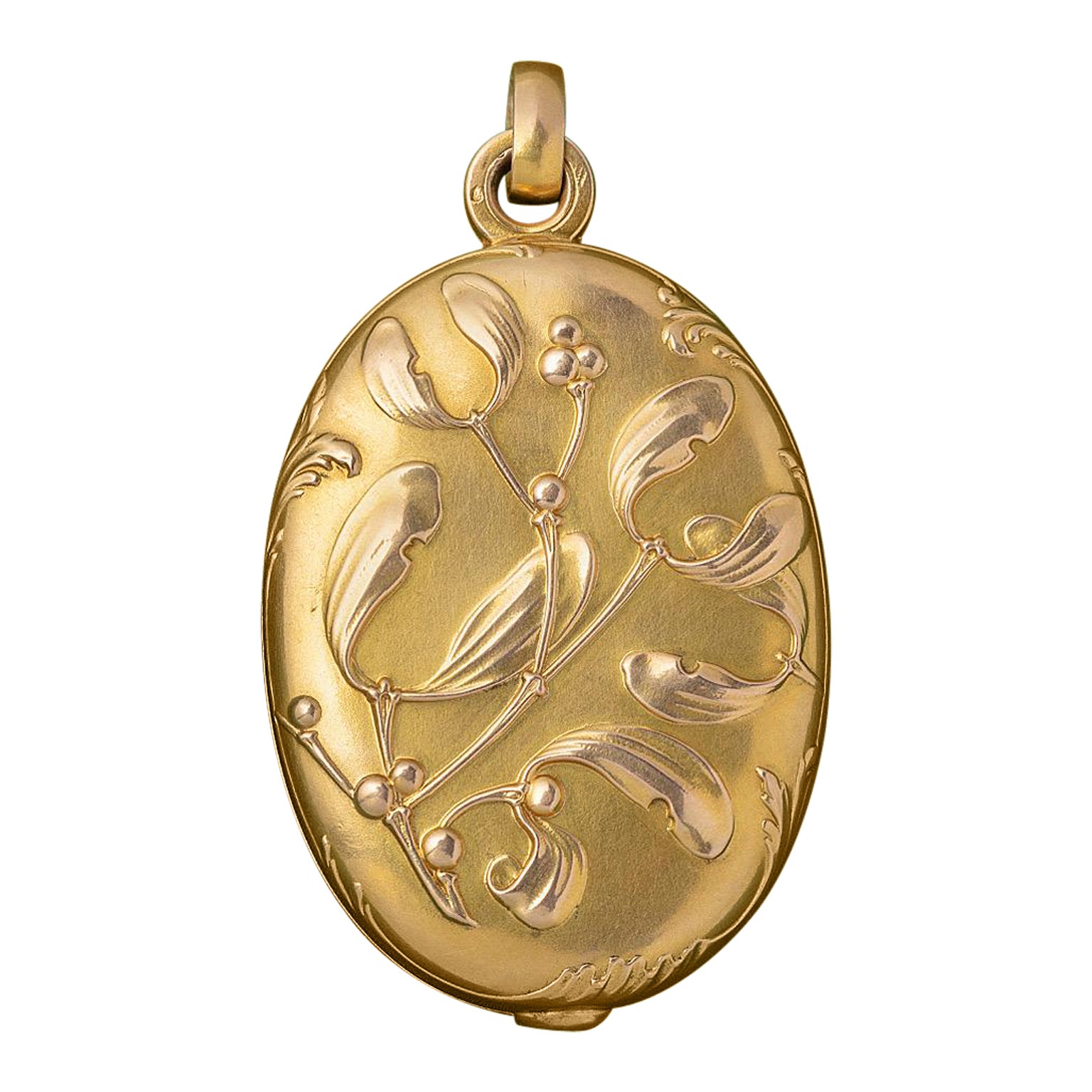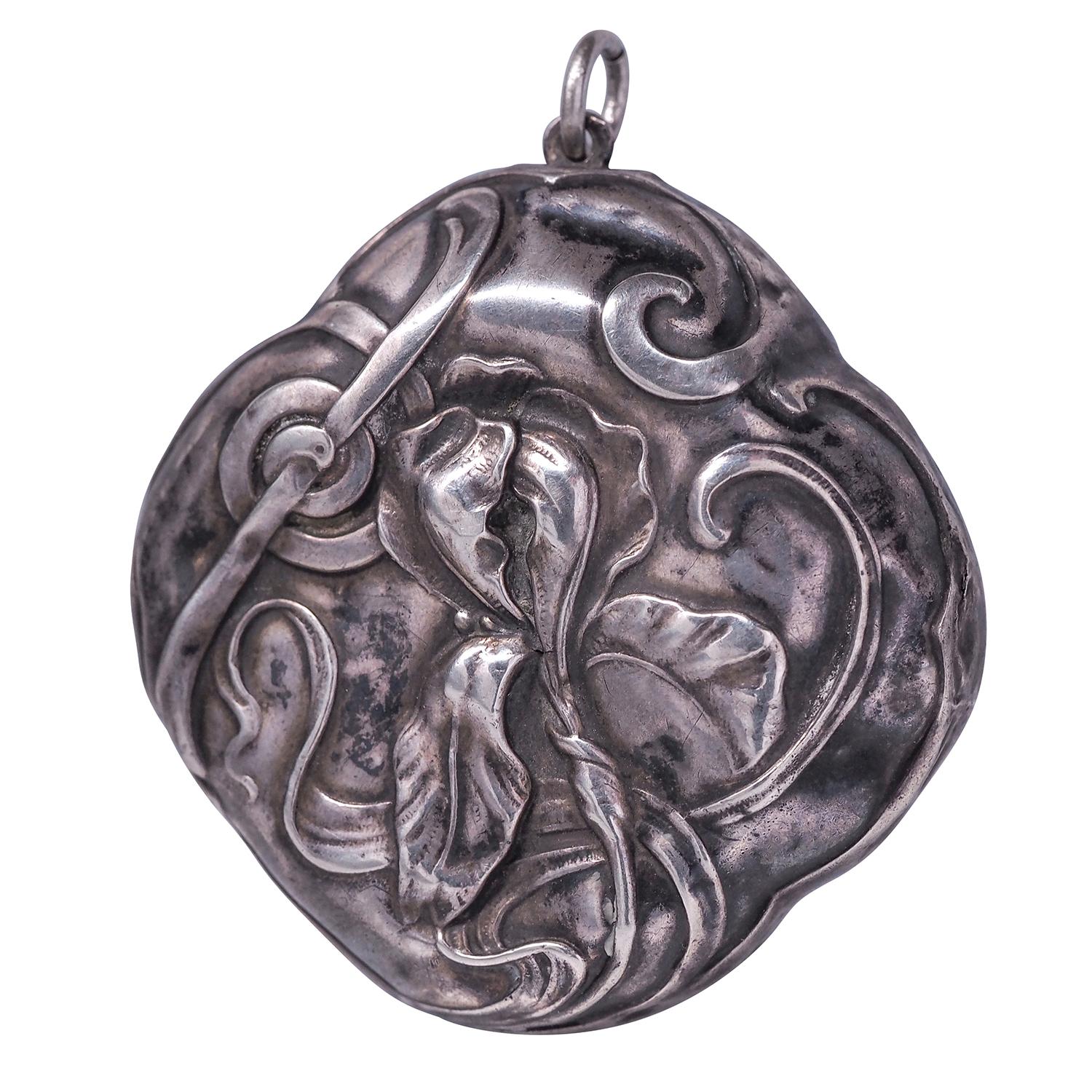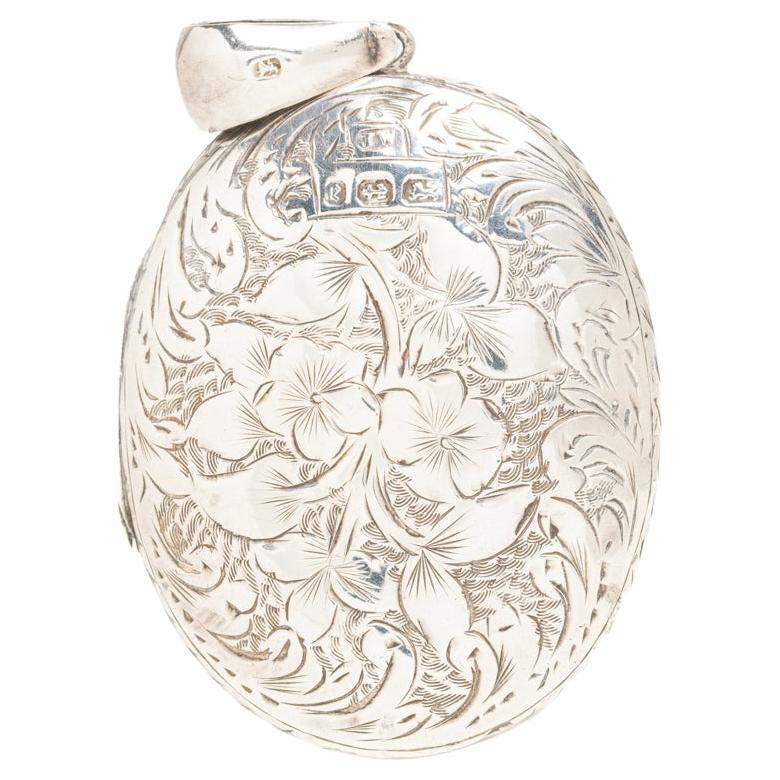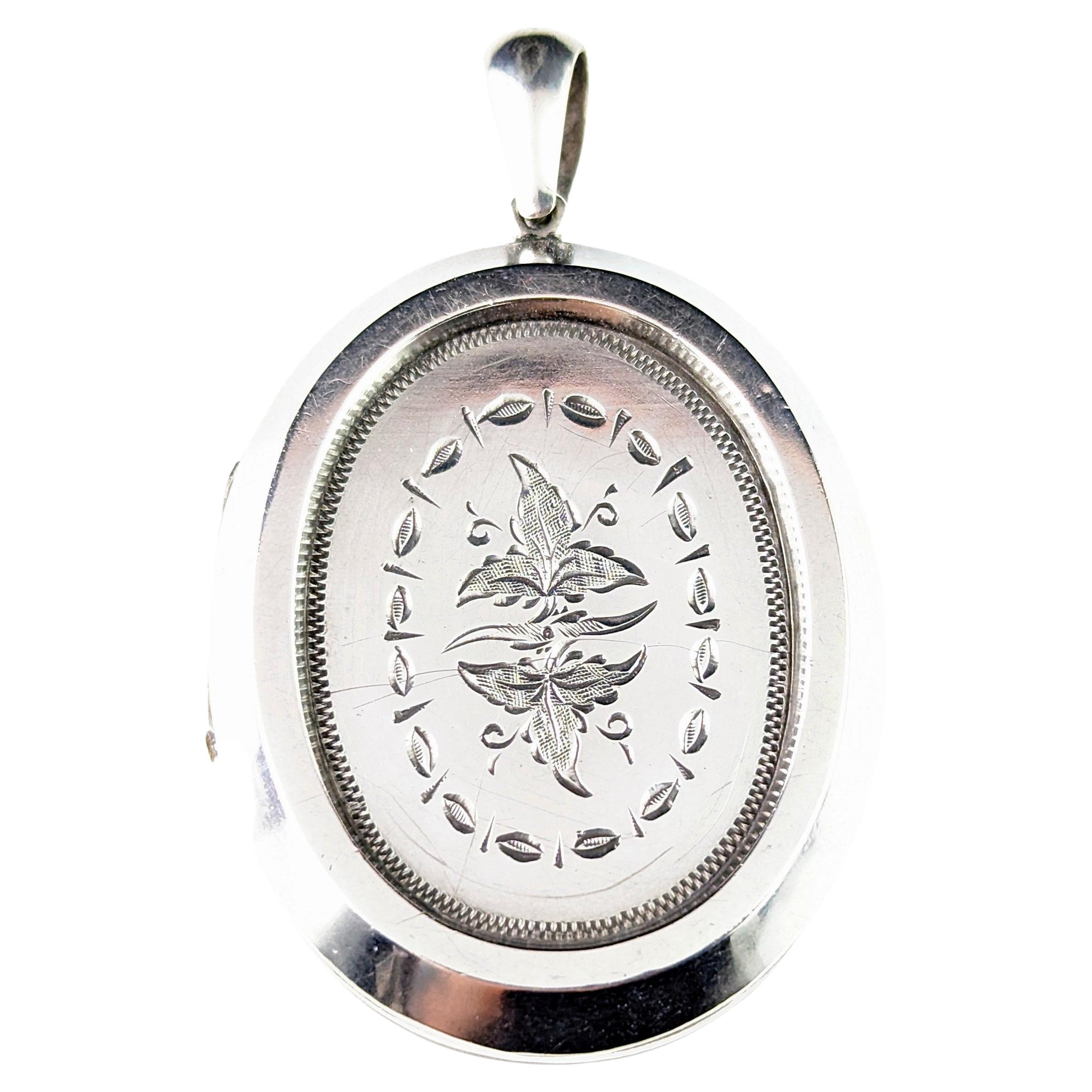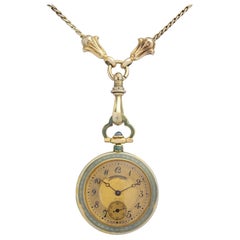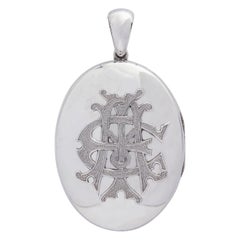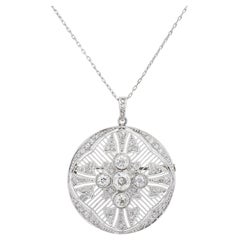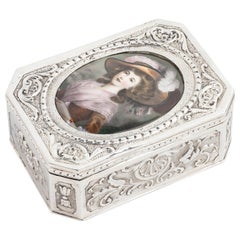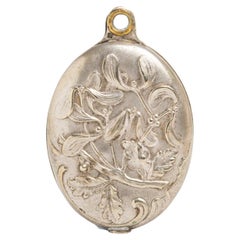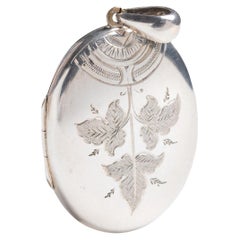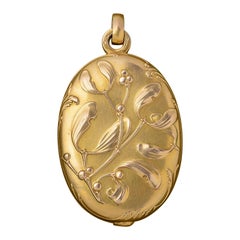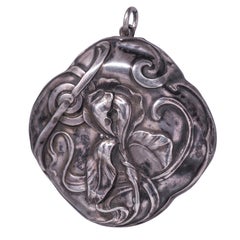Items Similar to Large French Silver Mistletoe Locket
Want more images or videos?
Request additional images or videos from the seller
1 of 6
Large French Silver Mistletoe Locket
$1,060
£815.56
€931.98
CA$1,517.11
A$1,654.38
CHF 869.09
MX$19,828.79
NOK 11,020.93
SEK 10,256.01
DKK 6,960.87
About the Item
A very fine French silver locket featuring mistletoe to both sides. It has a gold wash interior to prevent tarnish and closes firmly. It appears to be struck with the French guarantee silver mark and dates to circa 1900.
- Metal:
- Weight:24.6 g
- Dimensions:Height: 2.37 in (60 mm)Width: 1.78 in (45 mm)Depth: 0.4 in (10 mm)
- Style:
- Place of Origin:
- Period:
- Date of Manufacture:Circa 1900
- Condition:Wear consistent with age and use.
- Seller Location:Brisbane City, AU
- Reference Number:Seller: JP04271stDibs: LU2099210849762
About the Seller
5.0
Vetted Professional Seller
Every seller passes strict standards for authenticity and reliability
Established in 2011
1stDibs seller since 2020
46 sales on 1stDibs
Typical response time: 12 hours
- ShippingRetrieving quote...Shipping from: Brisbane City, Australia
- Return Policy
More From This Seller
View All18 Karat Gold, Tiffany & Co Enamelled Pendant Watch on Chain
By Tiffany & Co.
Located in Brisbane City, QLD
This Art Nouveau pendant watch on chain was made for Tiffany & Co for retail in the United States. The watch hangs from a yellow gold filled curb link chain that has a swivel type cl...
Category
Early 20th Century American Art Nouveau Pocket Watches
Materials
Gold, 18k Gold, Gold-filled, Yellow Gold, Enamel
Victorian Sterling Silver 'Amity Eternity Infinity' Locket
Located in Brisbane City, QLD
A wonderfully large sterling silver Victorian locket with an elaborate 'Amity, Eternity, Infinity' monogram to the centre front. The oval highly polished locket hangs from a tapering but large bale which allows either a large chain or bolt ring clasp to slide through with ease. To the front of the piece is an elaborate 'AEI' monogram which has been applied over the top of the locket, however is original to the piece. This monogram is often seen in Victorian jewellery and stands for 'Amity, Eternity & Infinity'. The firmly closing locket features two windows inside with glass to place a photograph or lock of hair behind. The piece dates to circa 1890 and due to the lack of hallmarks is unlikely to be English, but perhaps American in origin. A gorgeous example of Victorian era silver jewellery which is still so wearable today.
Marked - unmarked but tests as sterling silver
Measures - 6.75cm L x 4cm W
Total weight of piece - 30.6 grams (NB this includes the internal components of locket)
NB in the modelled and styled photographs the locket is pictured with a Victorian sterling silver book chain...
Category
Antique Late 19th Century American Victorian Pendant Necklaces
Materials
Silver, Sterling Silver
Belle Epoque Handmade Platinum and Diamond Brooch Pendant
Located in Brisbane City, QLD
This beautifully handmade, platinum and diamond brooch pendant was crafted in the first part of the 20th Century and can be described as 'Belle Epoque'. The hand pierced platinum dis...
Category
Early 20th Century European Belle Époque Pendant Necklaces
Materials
Diamond, Platinum
German 800 Purity Silver Repousse Box With Enamelled Medallion
Located in Brisbane City, QLD
This charming box dates to the Turn of The Century and has been crafted from 800 purity silver and decorated with enamels. The piece originates in Germany, is octagonal in shape and has been crafted with ornate repousse detailing. To the centre of the top is a delicately rendered miniature portrait of a lady...
Category
Early 20th Century German Art Nouveau Boxes and Cases
Materials
Silver, Enamel
Edwardian, Platinum & Old European Cut Diamond Lavalier Necklace
Located in Brisbane City, QLD
This platinum, 14 karat white gold and diamond necklace dates to the Edwardian period and is in a style that is often referred to as a 'lavalier'. The pendant which has been handcraf...
Category
Early 20th Century Art Nouveau Pendant Necklaces
Materials
Diamond, Gold, 14k Gold, White Gold, Platinum
Art Nouveau Edouard Henry Dreyfous Desk Clip
Located in Brisbane City, QLD
This exceedingly unusual desk accessory is an ornate 'paper clip' by the noted maker, Dreyfous. The clip is crafted from gilt sterling silver and features a large slab of polished am...
Category
Early 20th Century American Art Nouveau Desk Accessories
Materials
Amazonite, Marcasite, Sterling Silver, Gilt Metal
You May Also Like
Art Nouveau French Mistletoe Silver Plated Mirror Pendant
Located in Portland, England
This beautiful and finely crafted French silver plated mirror pendant is made circa 1890 and features a beautiful repousse mistletoe design in a very ...
Category
Antique Early 1900s French Art Nouveau Pendant Necklaces
Materials
Silver
Large Vintage Victorian Style Silver Ivy Locket
Located in Portland, England
This vintage Victorian style Silver locket with an ivy design dates circa 1970 and is inspired by Victorian style lockets/medallions from. The centre of the locket is decorated with ...
Category
Late 20th Century European Pendant Necklaces
Materials
Silver
Gold Antique French Mistletoe Locket
Located in Amsterdam, NL
A large, oval, 18 carat yellow gold locket with gold missletoe on the front and back 'en relief'. The locket opens sideways and on the inside there is a mirror on one side and a glas...
Category
Antique Early 1900s French Art Nouveau Pendant Necklaces
Materials
Gold, 18k Gold
Iris Antique Art Nouveau Silver Locket Mirror French Jewelry 1900
Located in Berlin, DE
French Art Nouveau Silver Locket with mirror
locket measurements - 0.75 х 1.73 х 2.05 in / 19 х 44 х 52 mm
weight - 14.63 grams
Category
Vintage 1910s French Art Nouveau Pendant Necklaces
Materials
Silver, Sterling Silver
$1,514 Sale Price
60% Off
Free Shipping
Victorian Aesthetic Movement Sterling Silver Floral Locket
Located in Portland, England
This gorgeous antique sterling silver large oval locket dated 1879. Beautifully engraved with a floral motif in the from of the locket and a geometric, scrolled motif on the reverse....
Category
Antique 1870s English Aesthetic Movement Pendant Necklaces
Materials
Sterling Silver
Antique Victorian silver locket pendant, Floral, large
Located in NEWARK, GB
A large Victorian silver locket is the perfect piece for adding a little statement to your favourite chain or necklace.
This aesthetic era piece is a good sized locket and will not ...
Category
Antique 19th Century British Victorian Pendant Necklaces
Materials
Silver, Sterling Silver
More Ways To Browse
Lockets French
1900 Locket
Large Antique Locket
Antique Art Nouveau Lockets
Art Nouveau Silver Locket
French Art Nouveau Locket
L Objet
Bronze Belt Buckle
Gold Cigarette Holder
Rat Jewelry
Gold Money Clips
Tiffany Coin
Antique Silver Money Clip
Hermes Paris Pill
Tiffany And Co Coins
18k Gold Cane
Money Clip Horse
14k Gold Hand Mirror
